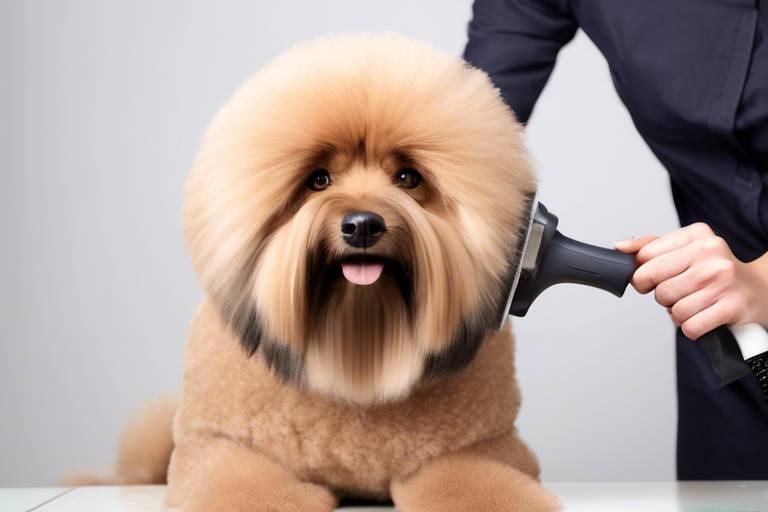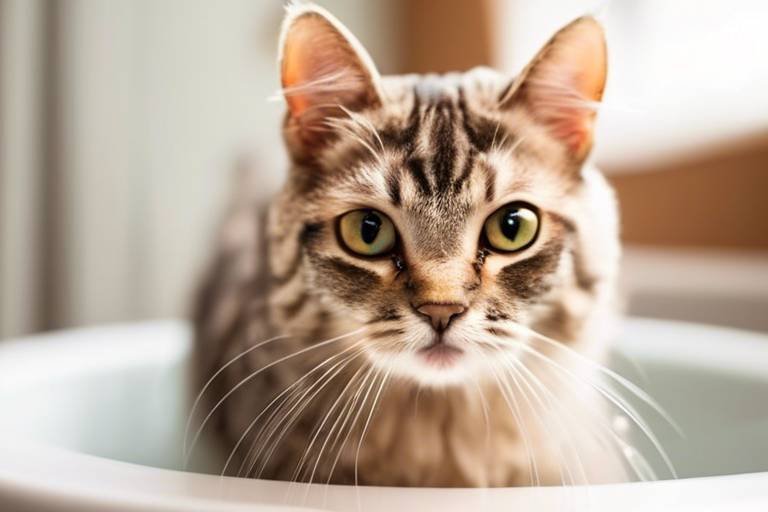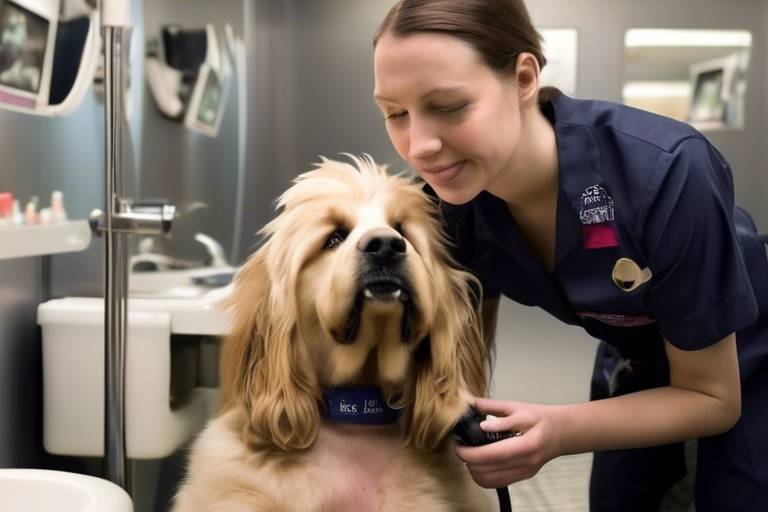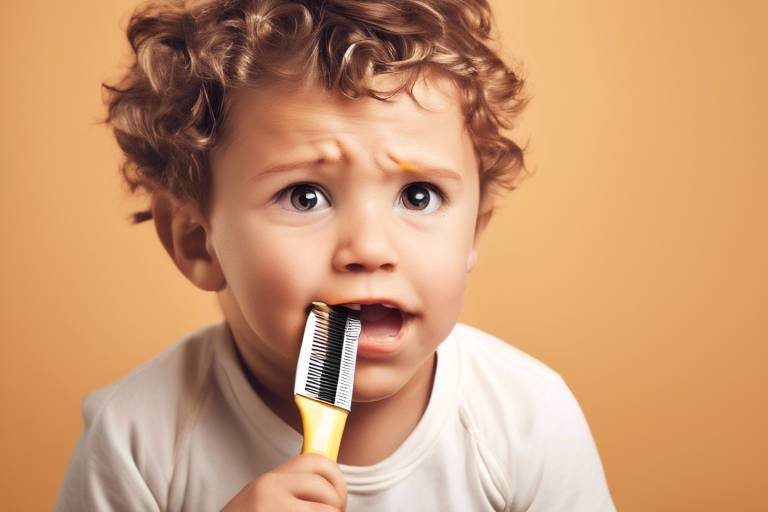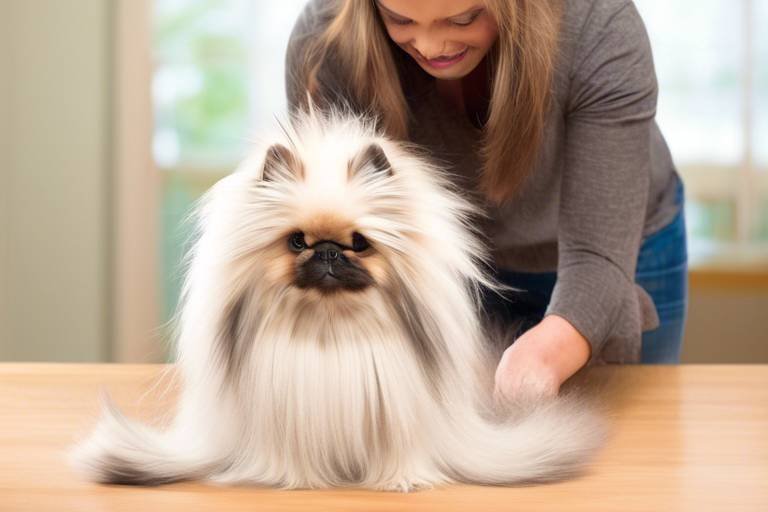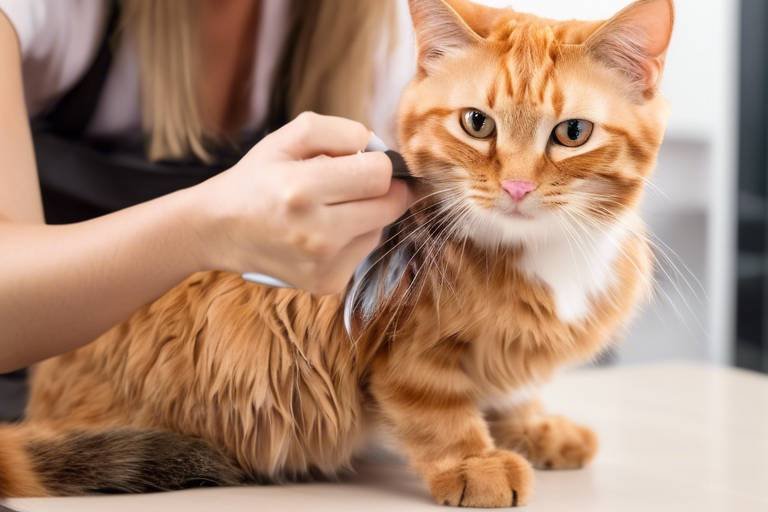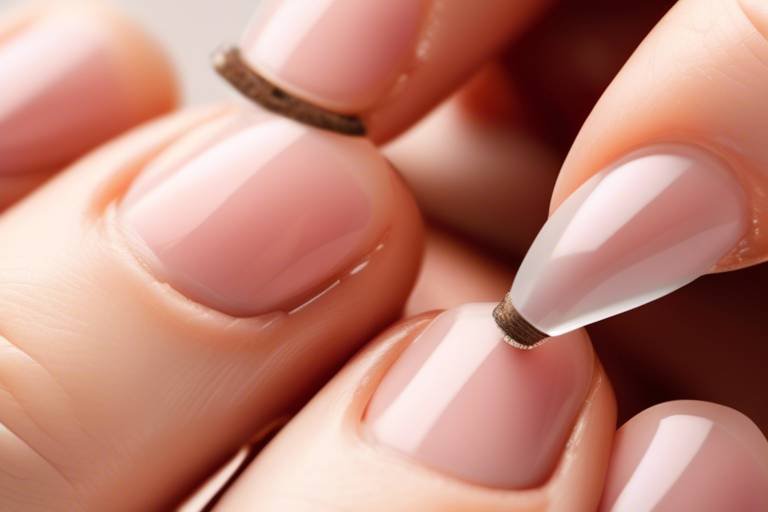How to Create a Grooming Schedule for Cats
Creating a grooming schedule for your cat is not just about maintaining their appearance; it’s a vital aspect of their overall health and well-being. Just like you wouldn’t skip your own hygiene routine, your furry friend deserves the same attention! Establishing a grooming schedule can also strengthen the bond between you and your cat, making grooming a time of connection rather than a chore. So, how do you get started? Let’s dive into the essentials of crafting a grooming schedule that works for both you and your feline companion.
Before you can set a grooming schedule, it's essential to understand your cat's unique grooming needs. Different breeds come with different coat types, which means their grooming requirements can vary significantly. For instance, long-haired cats like Persians or Maine Coons require more frequent grooming compared to short-haired breeds like Siamese or American Shorthairs. Additionally, age and health status play crucial roles. Kittens and older cats may need special attention due to their sensitivity and potential health issues. Assessing your cat's specific needs will help you create a tailored grooming plan that ensures they stay healthy and comfortable.
Having the right tools is crucial for effective grooming. Imagine trying to paint a masterpiece without the proper brushes! The same goes for grooming your cat. Essential grooming tools include brushes, combs, and nail clippers. When selecting these tools, consider your cat's coat type and grooming needs. For example, a slicker brush works wonders for removing tangles in long-haired cats, while a bristle brush is perfect for short-haired breeds. Investing in quality tools can make the grooming process smoother and more enjoyable for both you and your pet.
Different brushes serve different purposes, and knowing which one to use can make a world of difference. Here’s a quick breakdown:
- Slicker Brush: Great for removing mats and tangles in long-haired cats.
- Bristle Brush: Ideal for short-haired cats to remove loose hair and dirt.
- Undercoat Rake: Perfect for thick or double-coated breeds to remove loose undercoat hair.
Choosing the right brush not only makes grooming easier but also helps keep your cat's coat healthy and shiny.
If you have a long-haired breed, deshedding tools can be a game changer. These tools are specifically designed to reduce shedding and prevent matting, which can be a significant issue for long-haired cats. Regular use of deshedding tools can lead to less fur on your furniture and clothing, and a happier cat with a well-maintained coat. Plus, who doesn’t love the sight of a fluffy cat with a stunning coat?
Understanding the difference between clippers and scissors is vital for grooming. Clippers are often used for quick and efficient trimming, especially for areas that require precision, like the paws or around the ears. On the other hand, scissors can be useful for more delicate work, such as shaping your cat's fur or removing small mats. Knowing when to use each tool can help you achieve optimal grooming results without causing stress to your cat.
Proper nail care is an essential part of grooming that many pet owners overlook. Regular nail trimming is crucial to prevent discomfort and potential injury to your cat. If nails become too long, they can snag on furniture or even break, causing pain. To ensure a stress-free experience, make nail trimming a part of your grooming routine. Consider using cat-specific nail clippers and take your time, rewarding your cat with treats or affection to create a positive association with the process.
Creating a consistent grooming schedule is key to maintaining your cat's hygiene. It’s best to set aside specific times during the week for grooming sessions, making it a regular part of your routine. For example, you might choose to groom your cat every Sunday afternoon while watching your favorite show. This not only keeps your cat clean but also makes it a bonding experience. Remember, the more consistent you are, the more your cat will come to expect and enjoy these grooming sessions.
Determining how often to groom your cat depends on several factors, including their breed, coat length, and individual preferences. As a general rule:
- Long-haired cats: Every 2-3 days
- Short-haired cats: Once a week
- Senior or ill cats: As needed, based on their health
By keeping an eye on your cat’s coat and skin, you can adjust the frequency of grooming sessions as needed.
Recognizing when your cat needs grooming is essential for maintaining their health and comfort. Look for signs such as:
- Visible mats or tangles in their fur
- Excessive shedding
- Dirty or greasy fur
- Overgrown nails
If you notice any of these signs, it’s time to schedule a grooming session. Keeping your cat well-groomed not only helps them look good but also contributes to their overall well-being.
Grooming can sometimes be challenging for both cats and owners. It’s not uncommon for cats to resist grooming or become anxious during the process. However, there are strategies you can use to make grooming a more positive experience. For instance, if your cat tends to get matted, use a deshedding tool regularly to prevent tangles from forming.
Matting can be a significant issue, especially in long-haired cats. To prevent and manage matting effectively, consider the following tips:
- Brush your cat regularly to remove loose hair.
- Use a detangling spray for stubborn mats.
- Seek professional help if mats are too severe.
By staying proactive, you can keep your cat's coat healthy and free from mats.
Some cats may feel anxious during grooming. To help ease your cat’s stress, consider using calming techniques such as:
- Creating a quiet, comfortable grooming space.
- Using calming sprays or diffusers designed for pets.
- Offering treats and praise throughout the grooming process.
By taking the time to create a calm environment, you can make grooming a more enjoyable experience for both you and your cat.
Q: How often should I groom my cat?
A: It depends on the breed. Long-haired cats need grooming every 2-3 days, while short-haired cats can be groomed once a week.
Q: What tools do I need for grooming?
A: Essential tools include brushes, combs, nail clippers, and possibly deshedding tools for long-haired breeds.
Q: My cat hates being groomed. What should I do?
A: Try to create a calm environment, use treats, and gradually introduce grooming to help your cat feel more comfortable.
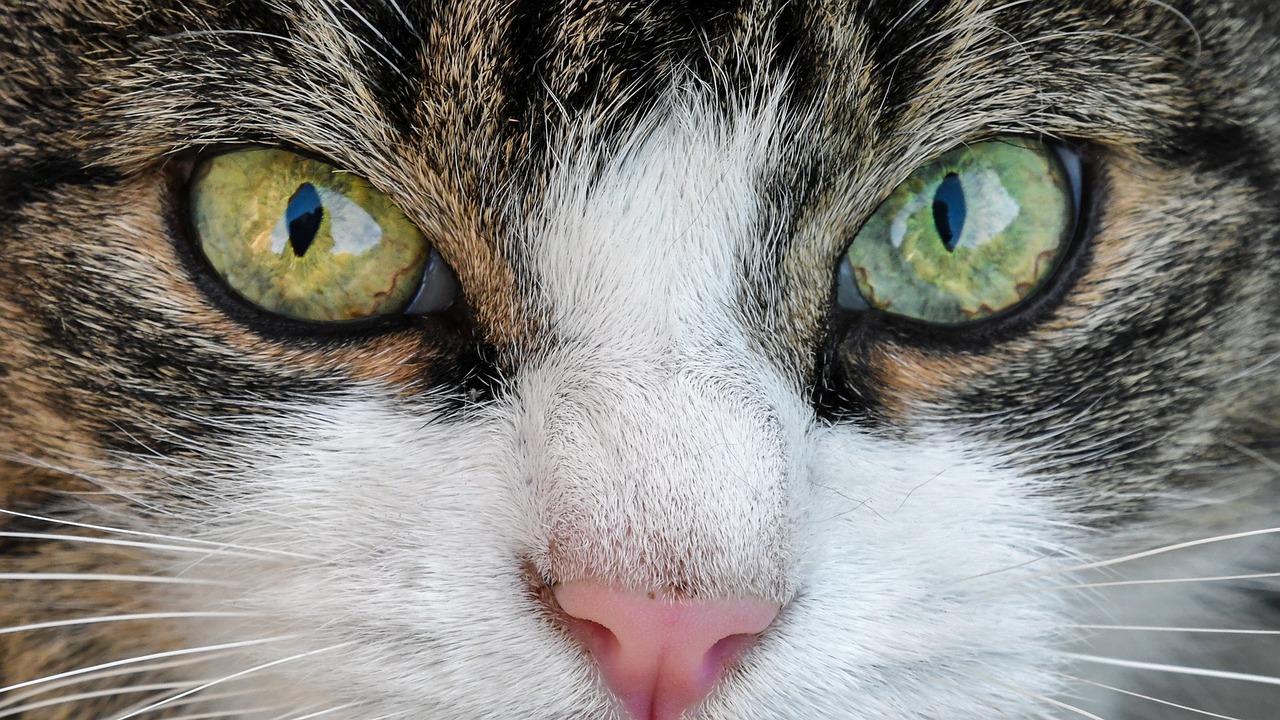
Understanding Your Cat's Grooming Needs
When it comes to grooming your feline friend, understanding their specific needs is crucial. Just like humans, cats come in a variety of breeds, each with unique characteristics that influence their grooming requirements. For instance, long-haired breeds like Persians and Maine Coons require more frequent grooming to prevent mats and tangles, while short-haired breeds such as Siamese and British Shorthairs may only need occasional brushing. It's essential to assess your cat's coat type, age, and health status to develop a grooming plan that works for both of you.
First, let's talk about coat types. If your cat has a long, luxurious coat, you'll need to invest more time in grooming. Regular brushing not only helps to keep their coat shiny and healthy but also reduces shedding and hairballs. On the other hand, short-haired cats often require less maintenance. However, they still benefit from regular grooming to remove loose hair and dirt. Understanding your cat's coat type is the first step in creating an effective grooming schedule.
Next, consider age. Kittens and young cats tend to have more energy and may be more willing to tolerate grooming sessions. As cats age, they may become less tolerant of grooming due to arthritis or other health issues. Therefore, adapting your grooming routine to accommodate your cat's age and physical condition is vital. Regular grooming can also help you spot any health issues early, such as skin irritations or lumps.
Finally, your cat's health status plays a significant role in their grooming needs. Cats with certain health conditions, like obesity or arthritis, may struggle to groom themselves effectively. In such cases, they will rely on you for their grooming needs. Additionally, if your cat has recently undergone surgery or is recovering from an illness, they may need extra attention and care. Always consult your veterinarian if you're unsure about your cat's grooming needs based on their health condition.
To summarize, establishing a grooming schedule tailored to your cat's unique needs involves:
- Identifying their coat type.
- Considering their age and physical condition.
- Monitoring their health status regularly.
By paying attention to these factors, you'll not only keep your cat looking fabulous but also enhance their overall well-being. Remember, grooming is not just about aesthetics; it's a bonding experience that fosters trust and affection between you and your furry companion. So grab your grooming tools and get ready to pamper your kitty!
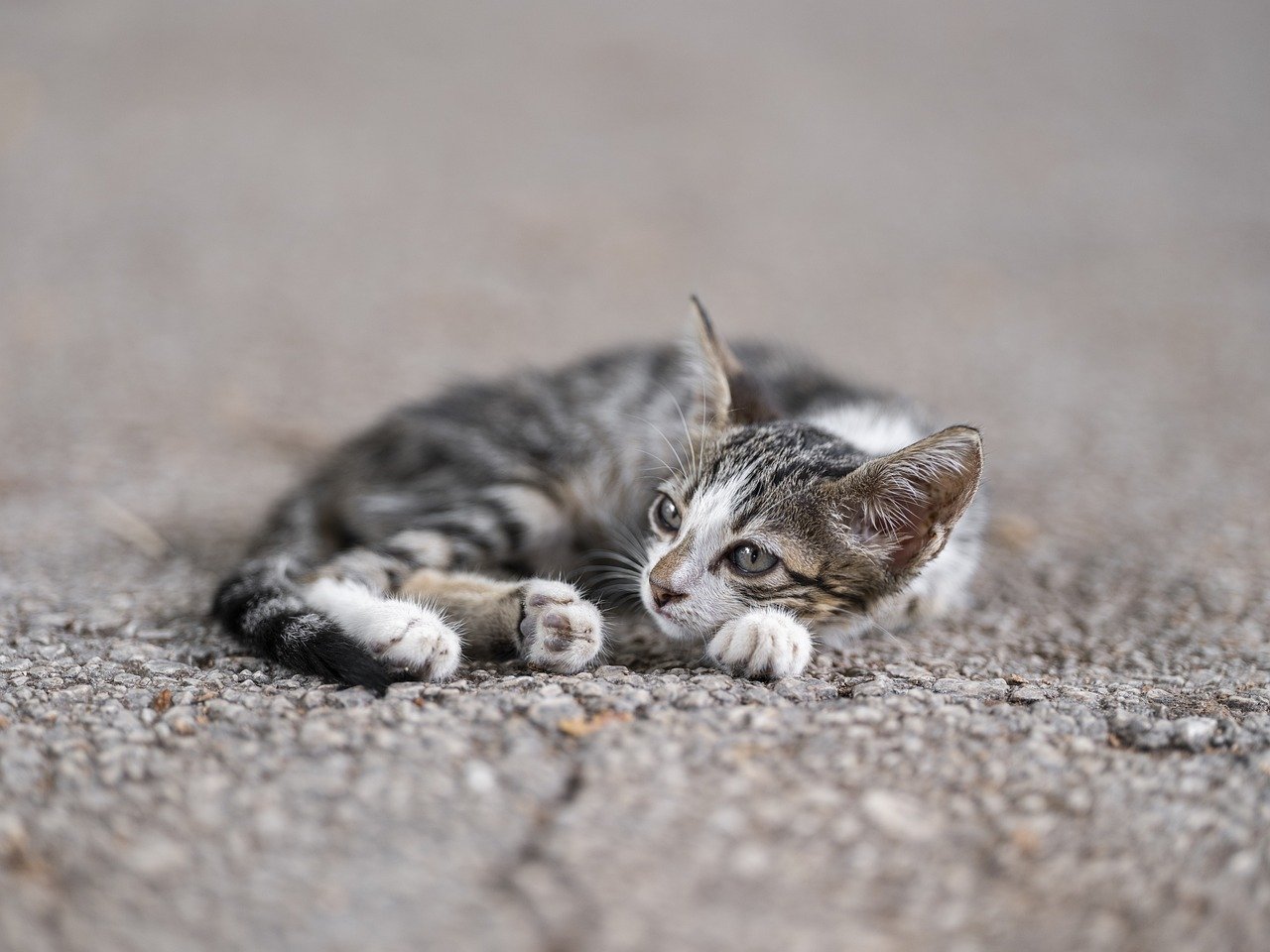
Essential Grooming Tools
When it comes to grooming your feline friend, having the right tools is absolutely crucial. Think of grooming tools as your secret weapons in the battle against dirt, mats, and shedding fur. Just like a chef needs good knives to prepare a delicious meal, you need effective grooming tools to keep your cat looking and feeling their best. So, what should you have in your grooming arsenal? Let's dive into the essentials!
First up, brushes! Not all brushes are created equal, and choosing the right one can make a world of difference. For example, a slicker brush is perfect for removing loose fur and preventing mats, especially in long-haired breeds. On the other hand, a bristle brush is great for short-haired cats, helping to distribute natural oils and keep their coat shiny. It's like choosing the right paintbrush for a masterpiece; the end result depends on the tools you use!
Next on the list are combs. Combs can be a game-changer for cats with longer fur, as they help detangle knots and keep the coat smooth. A wide-toothed comb works wonders for fluffing up the fur, while a fine-toothed comb is excellent for catching those pesky tangles. Just remember, the goal is to make grooming a pleasant experience, not a wrestling match!
Now, let’s not forget about nail care. Regular nail trimming is essential for your cat’s health and comfort. A good pair of nail clippers designed specifically for pets will make this task much easier. Some owners prefer guillotine-style clippers, while others swear by scissor-style ones. The key is to find what works best for you and your cat. After all, nobody wants to end up in a nail-trimming battle!
Finally, we have deshedding tools. If you have a long-haired breed or a cat that sheds like it’s going out of style, these tools are your best friends. They help reduce shedding and prevent mats, making your life—and your cat’s life—much easier. Using a deshedding tool is like giving your cat a spa day; they’ll feel refreshed, and you’ll appreciate the reduced fur on your furniture!
In summary, here’s a quick look at the essential grooming tools you should consider:
| Tool | Purpose |
|---|---|
| Slicker Brush | Removes loose fur and prevents mats |
| Bristle Brush | Distributes natural oils for a shiny coat |
| Wide-toothed Comb | Detangles knots and fluffs fur |
| Fine-toothed Comb | Catches tangles and smooths fur |
| Nail Clippers | Trims nails for health and comfort |
| Deshedding Tool | Reduces shedding and prevents mats |
Equipping yourself with these essential grooming tools is the first step toward a successful grooming routine. Remember, grooming is not just about keeping your cat clean; it’s also about bonding with them and ensuring their overall health. So, grab those tools and get ready for some quality time with your furry companion!
Q: How often should I groom my cat?
A: The frequency of grooming depends on your cat’s breed and coat type. Long-haired cats may need grooming several times a week, while short-haired breeds may only require grooming once a week.
Q: Can I use human grooming tools on my cat?
A: It's best to use tools specifically designed for pets. Human grooming tools may not be suitable and could cause discomfort or injury to your cat.
Q: What should I do if my cat hates being groomed?
A: Start slow and make grooming a positive experience. Use treats and praise to reward your cat, and consider calming techniques if they seem anxious.
Types of Brushes
When it comes to grooming your cat, choosing the right brush can make all the difference. Just like humans have different hair types that require specific care, cats also have unique coat characteristics that dictate the type of grooming tools you should use. Understanding the various types of brushes available is crucial for maintaining your feline friend's coat in top condition. Let’s dive into the world of cat brushes and explore what each type offers!
First up is the slicker brush. This brush is a favorite among cat owners, especially for long-haired breeds. It features fine, short wires close together on a flat surface, designed to effectively remove tangles, mats, and loose fur. The slicker brush is excellent for reaching the undercoat, making it an essential tool for preventing matting and promoting a healthy coat. However, be gentle while using it, as it can irritate your cat's skin if pressed too hard.
Next, we have the bristle brush. This brush is perfect for short-haired cats as it helps to remove loose hair while distributing natural oils throughout the coat. The bristles can be made of natural or synthetic materials, and they come in various stiffness levels. A bristle brush is a great choice for regular grooming sessions, keeping your cat’s coat shiny and healthy.
Another popular option is the rubber brush. These brushes have soft, rubber bristles that are gentle on your cat's skin and are particularly effective for removing loose fur. They also provide a pleasant massaging sensation that many cats enjoy. Rubber brushes can be a great choice for cats who are sensitive to other types of brushes, making grooming a more enjoyable experience for both of you.
If your cat tends to shed a lot, consider investing in a deshedding tool. These specialized tools are designed to reach deep into your cat's coat and remove loose undercoat hair without damaging the top coat. Brands like Furminator have become household names for a reason—they effectively reduce shedding and help keep your home fur-free!
Lastly, let’s not forget about the dematting comb. If you have a long-haired kitty prone to tangles, a dematting comb can be your best friend. These combs typically feature a combination of sharp blades and wide-toothed combs that help to break up mats without pulling on your cat's hair too harshly. When using a dematting comb, patience is key. Work slowly and gently to avoid causing discomfort to your furry friend.
In summary, having the right brush for your cat’s coat type can significantly enhance the grooming experience. Here’s a quick reference table to help you choose the best brush:
| Brush Type | Best For | Benefits |
|---|---|---|
| Slicker Brush | Long-haired cats | Removes tangles and loose fur |
| Bristle Brush | Short-haired cats | Distributes natural oils, removes loose hair |
| Rubber Brush | All coat types | Gentle, massages while removing fur |
| Deshedding Tool | Heavy shedders | Reduces shedding, keeps home clean |
| Dematting Comb | Long-haired cats with mats | Breaks up mats gently |
Choosing the right brush isn’t just about aesthetics; it’s about your cat’s comfort and health. So, take some time to assess your cat’s grooming needs and select the tools that will make grooming a positive experience for both of you!
- How often should I groom my cat? - It depends on the breed and coat type. Long-haired cats may need daily grooming, while short-haired cats may require it weekly.
- What if my cat doesn’t like being groomed? - Start slow, use treats, and try different brushes to find what they prefer. Patience is key!
- Can I use human brushes on my cat? - It’s best to use brushes specifically designed for cats, as they are gentler on their skin and coat.
Deshedding Tools
When it comes to grooming your feline friend, are your best allies, especially if you have a long-haired breed. These specialized tools are designed to remove loose fur and undercoat, significantly reducing shedding and keeping your home fur-free. Imagine a magic wand that not only makes your cat look fabulous but also keeps your furniture and clothes free from unwanted hair—well, that’s what deshedding tools can do!
There are a variety of deshedding tools available on the market, but understanding which one is right for your cat can make all the difference. For instance, a deshedding brush typically features a fine-toothed edge that effectively grabs loose hair without damaging the top coat. On the other hand, a de-shedding tool like the Furminator has a unique design that allows you to reach under the top coat to remove the undercoat without cutting the hair. This is particularly beneficial for breeds like the Maine Coon or Persian, where undercoat can be a significant issue.
Using a deshedding tool is not just about aesthetics; it’s also about your cat’s health. Regular deshedding can prevent painful matting, which can lead to skin issues and discomfort. Plus, it’s an excellent way for you to bond with your cat. Just picture yourself sitting on the couch, gently brushing your cat while they purr contentedly. It’s a win-win situation!
However, it’s essential to use these tools correctly to avoid causing any discomfort to your cat. Always start with a gentle touch, and make sure to brush in the direction of hair growth. If your cat seems anxious or uncomfortable, take a break and try again later. Remember, grooming should be a positive experience!
To help you choose the right deshedding tool, here’s a quick comparison table:
| Tool Type | Best For | Key Features |
|---|---|---|
| Deshedding Brush | Short to medium-haired cats | Fine-toothed edge, ergonomic handle |
| De-shedding Tool (e.g., Furminator) | Long-haired cats | Removes undercoat, prevents matting |
| Rubber Grooming Mitt | All cat breeds | Gentle massage, collects loose hair |
In conclusion, investing in the right deshedding tools can transform your grooming routine. Not only will your cat look and feel better, but you’ll also enjoy a cleaner home. So, gear up, grab your tools, and get ready to pamper your furry companion!
- How often should I use deshedding tools on my cat? It depends on your cat's coat type; generally, once a week is a good starting point for most breeds.
- Can I use human hairbrushes on my cat? It's best to use tools specifically designed for cats, as they are tailored to their unique coat needs.
- What should I do if my cat resists grooming? Try to make it a positive experience with treats and short sessions, gradually increasing the time as they become more comfortable.
Clippers vs. Scissors
When it comes to grooming your cat, one of the most crucial decisions you'll face is whether to use clippers or scissors. Each tool has its own unique advantages, and understanding these differences can make a significant impact on your grooming experience. Think of it like choosing between a paintbrush and a roller; each serves its purpose, but the outcome can vary greatly depending on what you're trying to achieve.
Clippers are often favored for their speed and efficiency, especially when dealing with thick or long fur. They can quickly trim down excess hair, making them ideal for larger grooming sessions or for cats with particularly dense coats. However, they require a bit of practice to master, as improper use can lead to nicks and discomfort for your feline friend. It's essential to select high-quality clippers designed specifically for pet grooming, as human clippers may not provide the best results and could potentially harm your cat.
On the other hand, scissors can offer a more controlled approach, especially for delicate areas such as around the face, ears, and paws. If your cat has a fine or silky coat, scissors can help you achieve a more precise cut without the risk of pulling or tugging at the hair. However, they do take more time and patience to use effectively. It's like sculpting with clay; you need to carve gently and thoughtfully to create the desired shape without ruining the overall form.
In many cases, a combination of both tools may be the best approach. For instance, you might start with clippers to remove the bulk of the fur and then finish with scissors for a refined look. This dual approach not only saves time but also ensures that your cat looks their best without compromising their comfort.
Here’s a quick comparison table to help you decide:
| Feature | Clippers | Scissors |
|---|---|---|
| Speed | Fast | Slower |
| Control | Less control | More control |
| Best For | Thick, long fur | Delicate areas |
| Ease of Use | Requires practice | Easy to use |
Ultimately, the choice between clippers and scissors comes down to your cat's specific grooming needs and your own comfort level with each tool. Whichever you choose, remember that patience and practice are key. Grooming should be a bonding experience, not a battle!
- How often should I groom my cat? The frequency depends on your cat's breed and coat type. Long-haired cats may need grooming several times a week, while short-haired cats may require less frequent grooming.
- Can I use human clippers on my cat? It's not recommended. Pet clippers are designed to handle the thickness of animal fur and provide a safer, more effective grooming experience.
- What should I do if my cat is scared of grooming? Start slowly and use calming techniques, such as treats and gentle petting, to help your cat associate grooming with positive experiences.
Nail Care Essentials
When it comes to grooming your feline friend, nail care is often an overlooked yet crucial aspect. Regular nail trimming not only helps maintain your cat's comfort but also protects your furniture and prevents potential injuries to both you and your pet. Have you ever felt the sharpness of a cat’s claws during playtime? Ouch! That’s why it’s essential to integrate nail care into your grooming routine.
First and foremost, it’s vital to understand that cats’ nails grow continuously. If left untrimmed, they can become overgrown, leading to discomfort and even health issues like ingrown nails. So, how often should you trim your cat’s nails? Typically, a good rule of thumb is to check their nails every two to three weeks. However, this can vary based on your cat's activity level and lifestyle. Indoor cats may need more frequent trims than outdoor cats, who naturally wear down their nails.
To make the process smoother, you’ll want to have the right tools on hand. A pair of quality cat nail clippers is essential. There are various types available, including scissor-style clippers and guillotine-style clippers. Each has its advantages, so it’s worth experimenting to see which one works best for you and your kitty. To help you choose, here’s a quick comparison:
| Type of Clipper | Best For | Pros | Cons |
|---|---|---|---|
| Scissor-style | All nail types | Easy to control, good for thick nails | Can be bulky for small hands |
| Guillotine-style | Medium to small nails | Precise cut, compact design | May not work well on thicker nails |
Now that you have your tools ready, let’s discuss the actual trimming process. Start by gently holding your cat’s paw and pressing the pad to extend the nail. This lets you see the quick—the pink part of the nail that contains blood vessels and nerves. Be cautious not to cut into the quick, as this can cause bleeding and pain. If your cat has dark nails, it can be a bit tricky to see the quick, so it’s better to trim a small amount at a time.
To make nail trimming a positive experience, consider using treats and praise as rewards. This encourages your cat to associate nail trimming with something enjoyable. If your cat is anxious, take your time and perhaps only trim one or two nails per session, gradually working up to a full trim. Remember, patience is key!
In addition to trimming, don’t forget about the importance of nail filing. After clipping, use a nail file to smooth out any sharp edges. This can help prevent accidental scratches and make your cat’s nails less likely to snag on fabrics. You can also consider using a nail grinder, which is a tool that sands down the nail gradually. It’s quieter than clippers and can be less intimidating for some cats.
In summary, regular nail care is a fundamental part of your cat’s grooming routine. By investing a little time and effort into this process, you’ll help ensure your cat remains comfortable and happy. Plus, you’ll be saving your furniture from those dreaded scratch marks! So, grab your clippers, treat your cat, and make nail trimming a fun bonding experience.
- How often should I trim my cat's nails? Generally, every 2-3 weeks, but it can vary based on your cat's activity level.
- What if my cat won’t let me trim their nails? Use treats and take it slow; try trimming a couple of nails at a time.
- Can I use human nail clippers on my cat? It's not recommended; cat nail clippers are designed specifically for their nails.
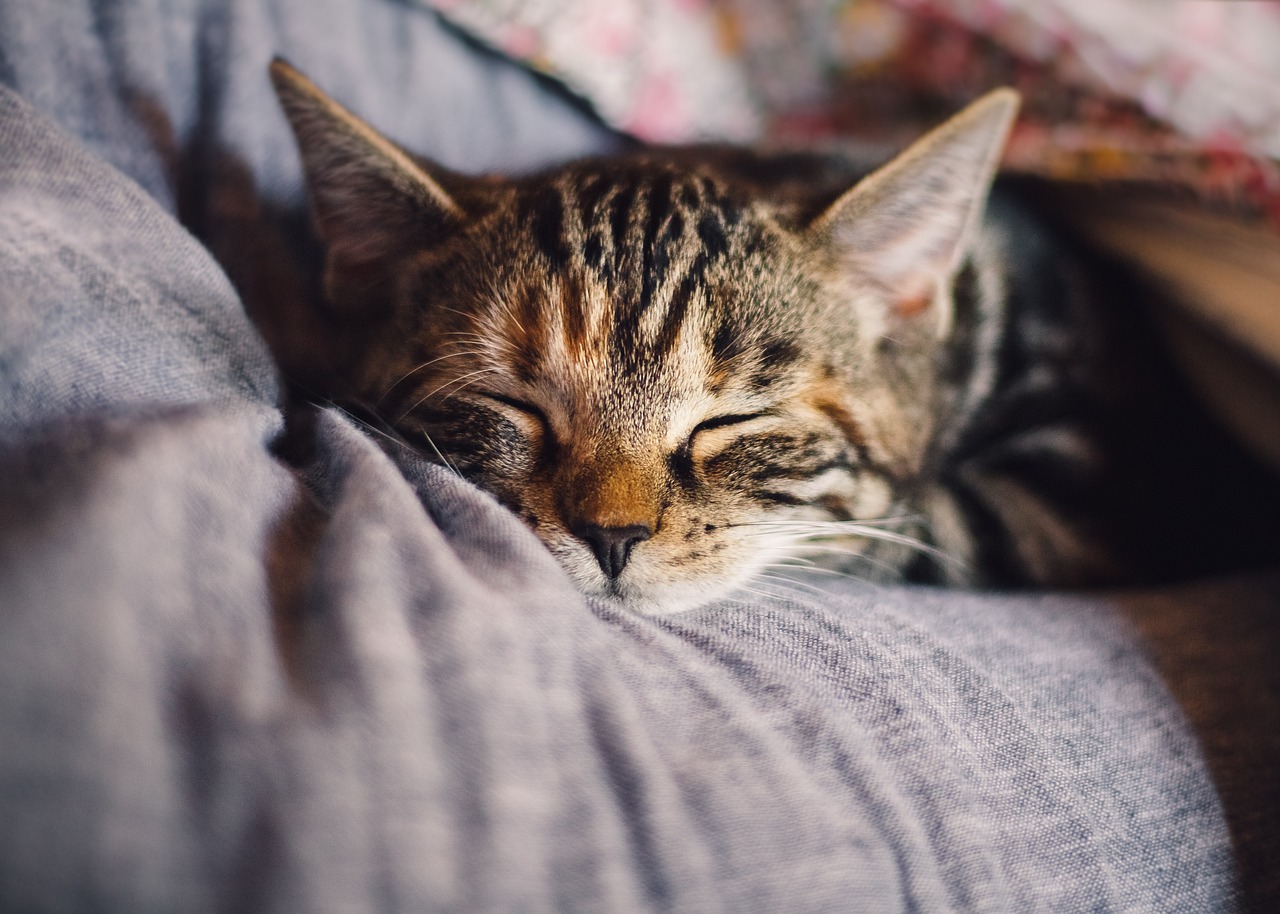
Establishing a Grooming Routine
Creating a consistent grooming schedule for your cat is essential for maintaining their hygiene and overall well-being. Just like humans, cats thrive on routine, and establishing a grooming routine can make the process smoother and more enjoyable for both you and your feline friend. But how do you go about setting this up? Well, it all starts with understanding your cat’s individual needs and preferences. Each cat is unique, so tailoring your grooming schedule to fit their personality and coat type is key.
First off, consider the frequency of grooming. For long-haired breeds, such as Persians or Maine Coons, you might need to groom them daily to prevent matting and tangles. Short-haired cats, on the other hand, may only require grooming once a week. However, this can vary based on your cat's activity level, shedding patterns, and even the season. During shedding seasons, you might find that your cat requires more frequent grooming sessions to help manage the extra fur flying around your home.
To help you establish the right frequency, here’s a simple table that outlines grooming needs based on coat type:
| Coat Type | Recommended Frequency |
|---|---|
| Short-Haired | Once a week |
| Medium-Haired | Every 3-5 days |
| Long-Haired | Daily |
Next, think about the time of day that works best for both you and your cat. Some cats may be more relaxed in the morning, while others might prefer the evening when they’re winding down. Pay attention to your cat’s behavior and choose a time that aligns with their natural rhythms. This will help to create a more positive grooming experience, as your cat will be more likely to cooperate if they’re feeling calm and comfortable.
Another important aspect to consider is the environment in which you groom your cat. Make sure to choose a quiet, comfortable space free from distractions. Having a designated grooming area can help your cat associate that spot with grooming, making it less stressful for them. You might want to include some of their favorite toys or a cozy blanket in the area to create a safe and inviting atmosphere.
As you start to establish your routine, pay attention to your cat’s reactions during grooming sessions. If they seem anxious or stressed, it might be worth adjusting the approach. Start with short sessions and gradually increase the time as your cat becomes more accustomed to the process. Incorporating positive reinforcement—like treats or gentle praise—can also go a long way in helping your cat feel more comfortable and relaxed during grooming.
Lastly, keep in mind that grooming is not just about hygiene; it’s also a wonderful opportunity to bond with your cat. Take the time to talk to them, pet them, and enjoy the experience together. By establishing a regular grooming routine, you’re not only helping to keep your cat clean but also strengthening the bond you share. Remember, a happy cat means a happy owner!
Frequency of Grooming
Determining how often to groom your cat is crucial for maintaining their overall hygiene and comfort. The frequency of grooming sessions can vary significantly based on several factors, including your cat's breed, coat type, age, and any specific health considerations. For instance, long-haired breeds like Persians or Maine Coons typically require more frequent grooming—often several times a week—to prevent tangles and matting. On the other hand, short-haired cats, such as Siamese or American Shorthairs, may only need grooming once a week or even less frequently.
To help you establish an effective grooming schedule, consider the following factors:
- Coat Type: Long-haired cats need more regular grooming to keep their coats smooth and prevent mats, while short-haired cats may not require as much attention.
- Age: Kittens and younger cats often have more energy and may require more frequent grooming to help them get used to the process. Older cats may need less frequent grooming, depending on their mobility and health.
- Health Status: Cats with certain health issues, such as obesity or arthritis, may struggle with self-grooming. In these cases, more frequent grooming sessions are essential to help them stay clean and comfortable.
It's also important to pay attention to your cat's behavior and coat condition. If you notice excessive shedding, visible dirt, or an increase in hairballs, it might be time to step up your grooming efforts. Additionally, some cats may signal their grooming needs through body language—if they seem uncomfortable or are licking themselves more than usual, it’s a good indication that they need your help.
To sum it up, establishing a grooming frequency that suits your feline friend is vital. Regular grooming not only keeps their coat healthy but also strengthens the bond between you and your cat. So, keep a close watch on your kitty's needs and adjust your grooming schedule accordingly to ensure they remain happy and healthy!
Q: How often should I groom my long-haired cat?
A: Long-haired cats should ideally be groomed at least 2-3 times a week, or even daily, to prevent tangles and matting.
Q: Can I use human brushes on my cat?
A: It’s best to use brushes designed specifically for cats, as they cater to their unique coat types and avoid causing discomfort.
Q: What if my cat hates being groomed?
A: Start slowly and use calming techniques, such as treats and gentle petting, to make the experience more enjoyable for your cat.
Q: How can I tell if my cat needs grooming?
A: Signs include excessive shedding, visible dirt, matting, or if your cat seems uncomfortable or is grooming themselves more than usual.
Signs Your Cat Needs Grooming
Just like humans, our feline friends have their own unique grooming needs, and sometimes those needs can go unnoticed until they become more apparent. As a responsible cat owner, it's essential to be vigilant and recognize the signs that indicate your cat may require grooming. After all, a well-groomed cat is not only healthier but also happier!
One of the most obvious signs that your cat needs grooming is when you start to notice loose fur around your home. If you find yourself vacuuming more often or discovering tufts of hair on your clothes, it’s a clear indication that your cat is shedding more than usual. This can be especially true for long-haired breeds, which require regular grooming to prevent excessive shedding and matting.
Another sign to watch for is matting in your cat's fur. Mats can form quickly, especially in areas where your cat may not be able to reach, such as behind the ears or under the legs. If you notice clumps of fur that feel tight or look tangled, it’s time to break out the grooming tools. Not only do mats look unsightly, but they can also cause discomfort and even skin issues if left untreated.
Additionally, pay attention to your cat's behavior. If your usually playful kitty becomes irritable or starts hiding away, it might be due to discomfort caused by an unkempt coat. Cats are instinctively clean animals, and when they feel dirty or uncomfortable, it can affect their mood. Regular grooming can help alleviate this stress, making your cat feel more at ease.
Moreover, keep an eye on your cat’s nails. If you can hear the sound of clicking when they walk, it’s a sure sign that their nails are too long and need trimming. Overgrown nails can lead to painful walking and even injuries. Regular nail care is an essential part of grooming that should not be overlooked.
Lastly, consider your cat's overall health. If your cat has been experiencing changes in their skin condition, such as excessive scratching or visible irritations, it could be a sign that they need grooming. Regular brushing helps distribute natural oils and remove dirt, promoting healthier skin and coat. If you notice any unusual signs, it might also be worth consulting your veterinarian.
In summary, being proactive about your cat's grooming needs will not only keep them looking their best but also contribute to their overall health and happiness. By keeping an eye out for these signs, you can ensure that your furry friend remains comfortable and well-groomed.
Q: How often should I groom my cat?
A: The frequency of grooming depends on your cat's breed and coat type. Long-haired cats may require grooming several times a week, while short-haired cats might only need it once a week.
Q: What if my cat doesn't like being groomed?
A: If your cat is anxious about grooming, try to make the experience as positive as possible. Use treats, calming techniques, and start with short sessions to help them get used to it.
Q: Can I use human grooming tools on my cat?
A: It's best to use tools specifically designed for cats, as their fur and skin have different needs than human hair.
Q: What should I do if I find mats in my cat's fur?
A: Use a dematting tool or a slicker brush to carefully remove mats. If they are severe, consider seeking professional grooming assistance to avoid hurting your cat.
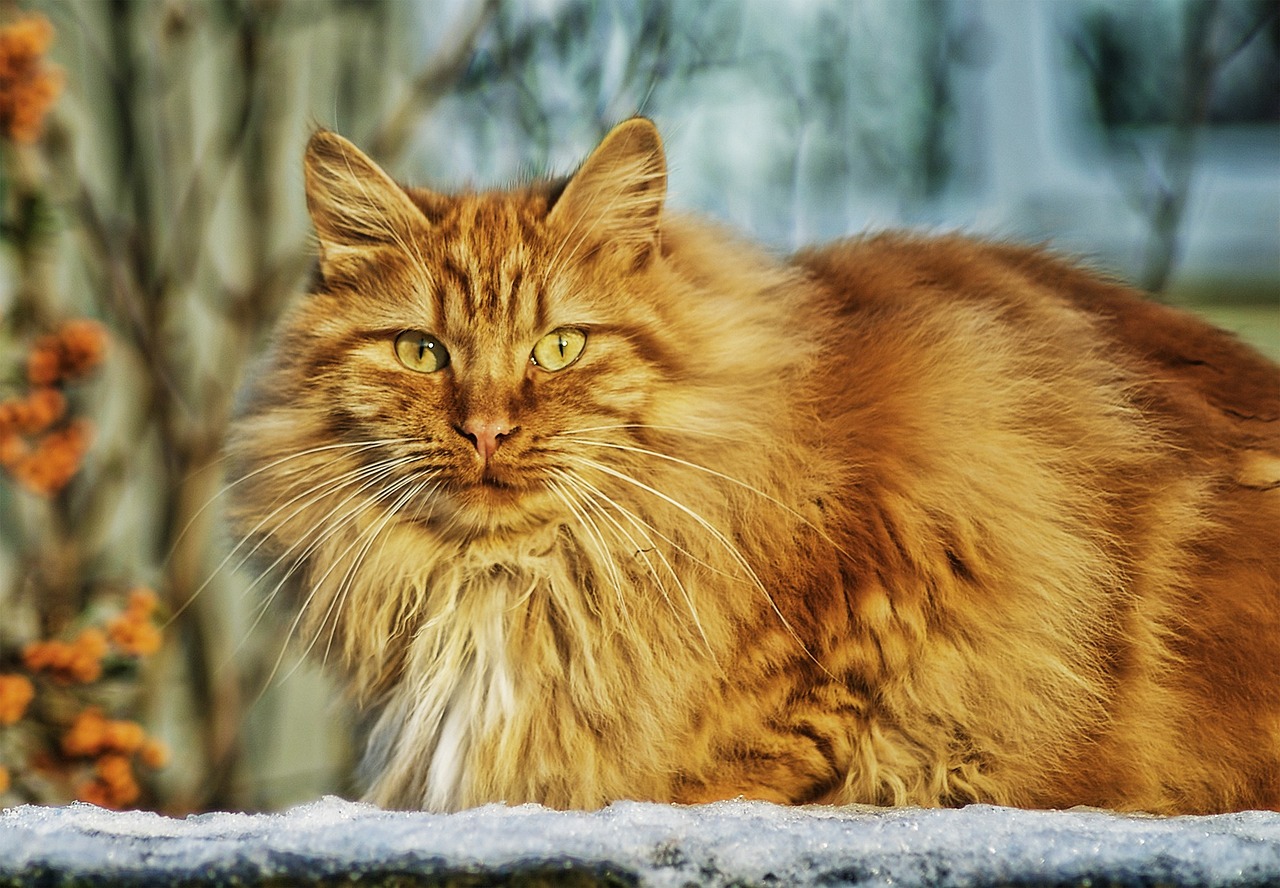
Handling Grooming Challenges
Grooming your beloved feline can sometimes feel like navigating a minefield. Whether your cat is a feisty little diva or a laid-back cuddle bug, there are bound to be challenges along the way. But fear not! With a little patience and the right strategies, you can turn grooming into a positive experience for both you and your furry friend. Let’s dive into some common grooming hurdles and how to tackle them head-on.
One of the most significant challenges cat owners face is dealing with matting. This is especially prevalent in long-haired breeds, where fur can become tangled and knotted. Not only is matting uncomfortable for your cat, but it can also lead to skin irritations if not addressed promptly. To prevent matting, regular grooming is essential. Aim to brush your cat at least once a week, or more frequently if they have a particularly thick coat. If you do encounter mats, use a mat splitter or a wide-toothed comb to gently work them out. Always be gentle—your cat’s comfort should be your top priority!
Another common issue is managing your cat’s anxiety during grooming sessions. Many cats can feel anxious or stressed when they see grooming tools come out. To help ease their nerves, consider these calming techniques:
- Create a Relaxing Environment: Choose a quiet space free from distractions. Soft music or white noise can also help soothe your cat.
- Use Positive Reinforcement: Reward your cat with treats or gentle praise during and after grooming sessions. This helps them associate grooming with positive experiences.
- Take It Slow: If your cat is particularly anxious, break up grooming sessions into shorter intervals. Start with just a few minutes and gradually increase the time as they become more comfortable.
Moreover, it’s essential to recognize that every cat is unique. What works for one might not work for another. Pay attention to your cat's body language. If they seem tense or are trying to escape, it might be time to take a break. Understanding your cat's signals will help you create a more tailored grooming experience that respects their comfort level.
Lastly, don’t hesitate to seek help if grooming becomes too challenging. Professional groomers are trained to handle various grooming issues and can provide valuable tips for at-home care. Sometimes, a fresh set of hands can make all the difference!
Q: How often should I groom my cat?
A: The frequency depends on your cat's breed and coat type. Long-haired cats may need grooming several times a week, while short-haired breeds can often be groomed once a week.
Q: What should I do if my cat hates being groomed?
A: Try to create a calming environment, use positive reinforcement, and take breaks during grooming sessions. If your cat continues to resist, consider consulting a professional groomer.
Q: How can I prevent matting in my long-haired cat?
A: Regular brushing is key! Aim for at least once a week, and consider using a deshedding tool to keep their coat healthy and mat-free.
Q: What tools do I need for cat grooming?
A: Essential tools include brushes, combs, nail clippers, and possibly deshedding tools depending on your cat's coat type.
Dealing with Matting
Matting can be a significant concern, especially for our beloved long-haired feline friends. Imagine your cat's beautiful, flowing coat suddenly turning into a tangled mess of knots and clumps. It's not just an eyesore; it can also lead to skin irritation and discomfort for your pet. So, how do you tackle this issue effectively? First, it's essential to understand the causes of matting. Factors such as shedding, dirt, and even the cat's natural oils can contribute to those pesky tangles. Regular grooming is your best defense against matting, but sometimes, even the most diligent owners find themselves facing this challenge.
When you encounter matting, the first step is to remain calm and patient. Cats can sense your anxiety, and a stressed owner often leads to a stressed cat. Begin by assessing the severity of the mats. If they are small and manageable, you might be able to gently work them out with your fingers or a wide-toothed comb. However, for larger mats, you may need to employ a more strategic approach. Here are some effective methods to deal with matting:
- Use a Detangling Spray: A specialized cat-safe detangling spray can work wonders. Spray it on the matted area and let it sit for a few minutes to loosen the hair.
- Work from the Tips: Always start combing from the tips of the hair and work your way up to the roots. This technique helps to minimize pulling and discomfort.
- Use the Right Tools: Invest in a quality dematting tool or comb. These tools are specifically designed to break up mats without damaging the underlying fur.
- Be Gentle: If you encounter resistance while combing, don’t force it. Instead, try to gently separate the mat with your fingers or use the comb to tease it apart.
If the matting is extensive or very tight, it may be best to consult a professional groomer. They have the experience and tools necessary to safely remove mats without harming your cat. Remember, your cat's safety and comfort should always come first.
Finally, prevention is key! Regular grooming sessions will not only keep your cat looking fabulous but also help you catch any potential mats before they become a problem. Aim for a grooming schedule that suits both you and your cat—after all, grooming should be a bonding experience, not a chore. Consider this: just like we enjoy a good spa day, your cat will appreciate the attention and care, leading to a happier and healthier life.
Calming Techniques for Anxious Cats
Grooming can be a daunting experience for some cats, especially if they are naturally anxious or have had negative experiences in the past. It's essential to create a calming environment that helps your feline friend feel secure and relaxed. One effective technique is to establish a routine. Cats thrive on predictability, so try to groom them at the same time each week. This consistency can help them anticipate the grooming session, reducing anxiety over time.
Another technique involves using positive reinforcement. Reward your cat with treats or praise during and after grooming sessions to create a positive association with the process. You might say, "Good kitty!" or offer a small treat when they remain calm. Over time, your cat will learn that grooming can lead to enjoyable outcomes.
Additionally, consider the use of calming products like pheromone diffusers or sprays. These products mimic the natural pheromones that cats produce, promoting a sense of calm and safety. You can apply these sprays to your grooming tools or the area where you groom your cat. Just be sure to give your cat some time to adjust to the scent before starting the grooming process.
Creating a comfortable grooming space is also crucial. Ensure the area is quiet, free from distractions, and equipped with cozy bedding or a soft blanket. This will help your cat feel more at ease. You might also want to play soft music in the background to further soothe their nerves. Remember to keep the grooming sessions short initially, gradually increasing the duration as your cat becomes more comfortable with the process.
Lastly, if your cat shows signs of extreme stress, such as hissing or trying to escape, it’s essential to take a step back. Give them some space and try again later. Patience is key. Remember, grooming should be a bonding experience, not a battle!
- How often should I groom my anxious cat? It depends on the breed and coat type. Long-haired cats may need grooming several times a week, while short-haired cats might only need grooming once a week. Adjust based on your cat's comfort level.
- What if my cat hates being groomed? Gradually introduce grooming tools and start with short sessions. Use treats and praise to create positive associations.
- Are there specific tools for anxious cats? Look for grooming tools that are gentle and designed for sensitive cats. Soft brushes and combs can help reduce discomfort.
Frequently Asked Questions
- How often should I groom my cat?
The frequency of grooming depends on your cat's breed, coat type, and individual needs. Long-haired cats may require grooming several times a week, while short-haired cats might only need it once a week. Always keep an eye on your cat's coat condition and adjust accordingly!
- What grooming tools do I need for my cat?
Essential grooming tools include a good brush, a comb, nail clippers, and possibly deshedding tools. The type of brush you choose should match your cat's coat type—there are different brushes for long-haired, short-haired, and even curly coats!
- How can I tell if my cat needs grooming?
Look for signs like excessive shedding, mats in their fur, or a dirty coat. If your cat seems uncomfortable or is licking themselves more than usual, it might be time for a grooming session!
- What should I do if my cat hates being groomed?
If your cat is anxious about grooming, try introducing the grooming process slowly. Use calming techniques, such as treats or gentle petting, to create a positive association. You can also consult your vet for additional tips!
- Are there specific techniques for dealing with matting?
Yes! To prevent matting, brush your cat regularly, especially in high-risk areas like behind the ears and under the legs. If you encounter mats, use a detangling spray and a wide-toothed comb, or consult a professional groomer for severe cases.
- Can I use human grooming tools on my cat?
It's best to use tools specifically designed for cats. Human grooming tools may not be suitable for their unique fur types and can cause discomfort or injury. Always opt for cat-specific brushes and clippers!



